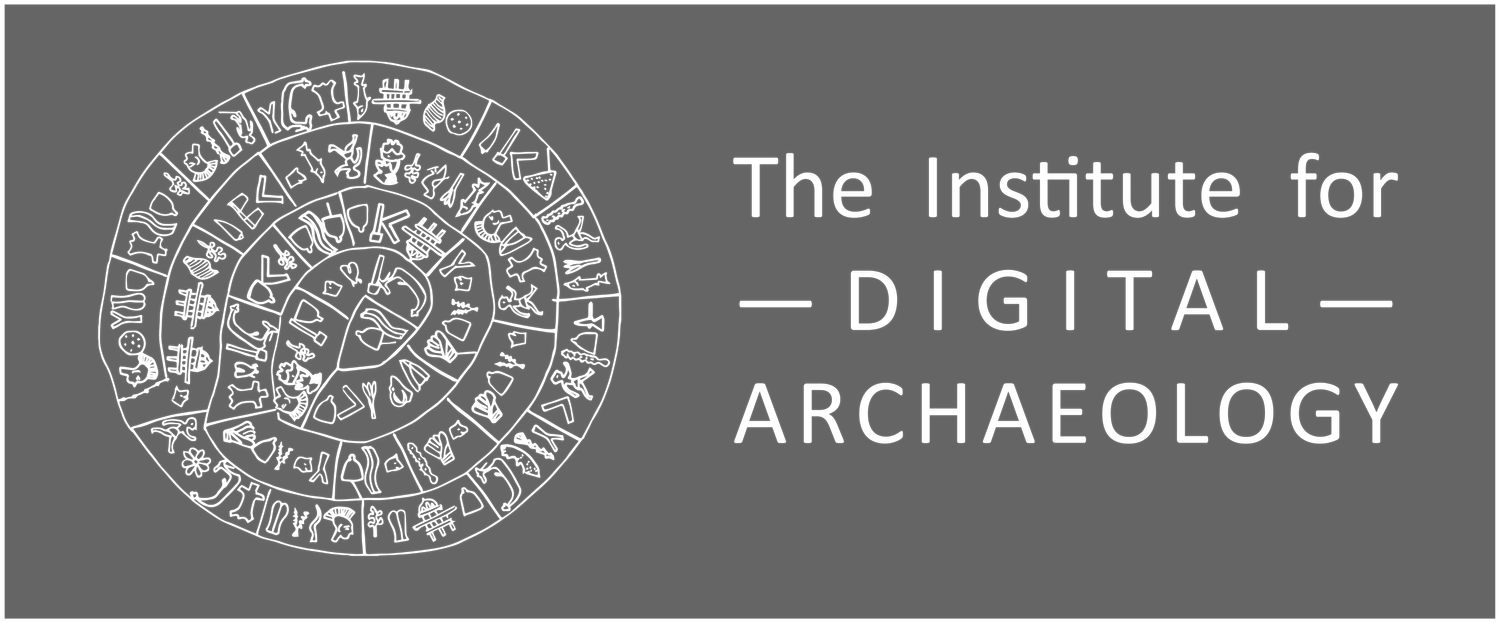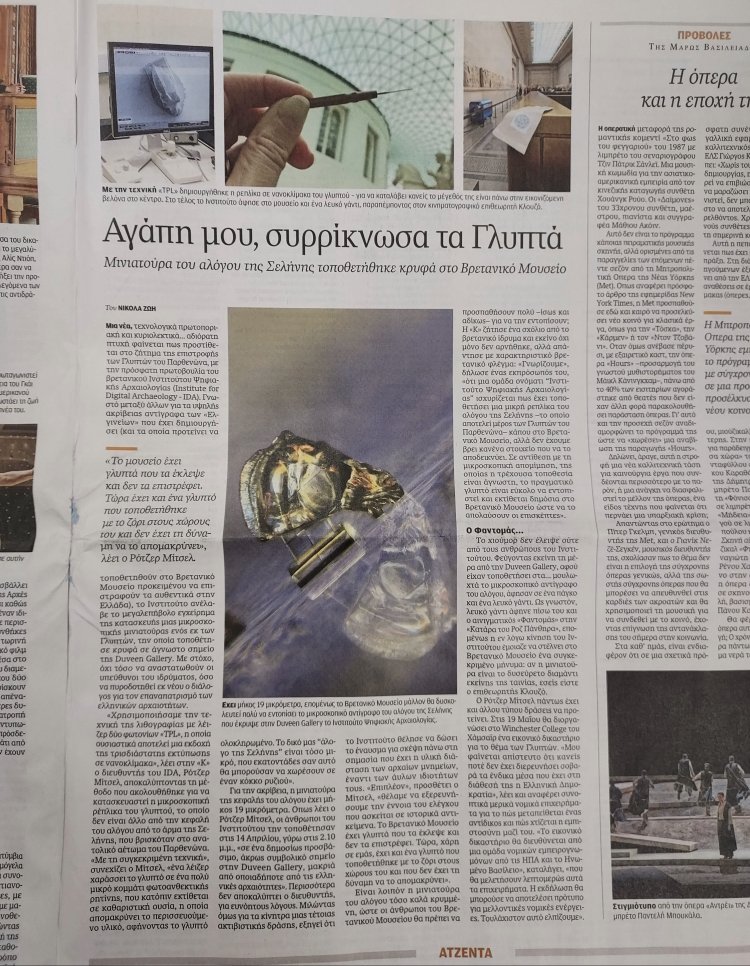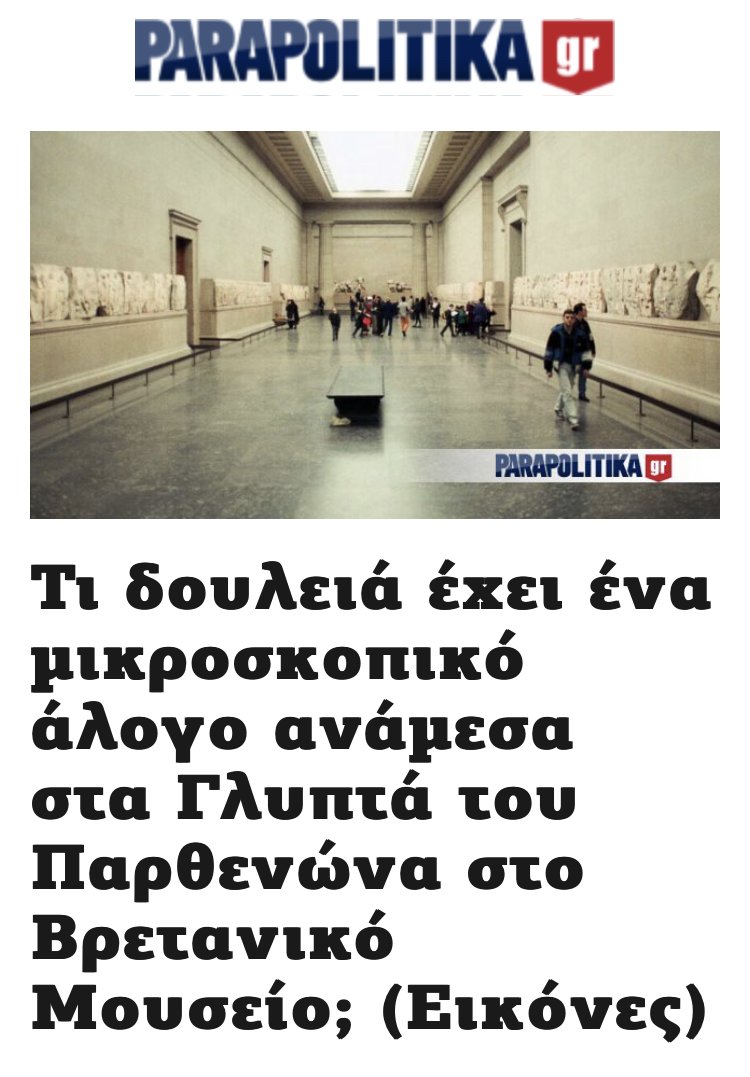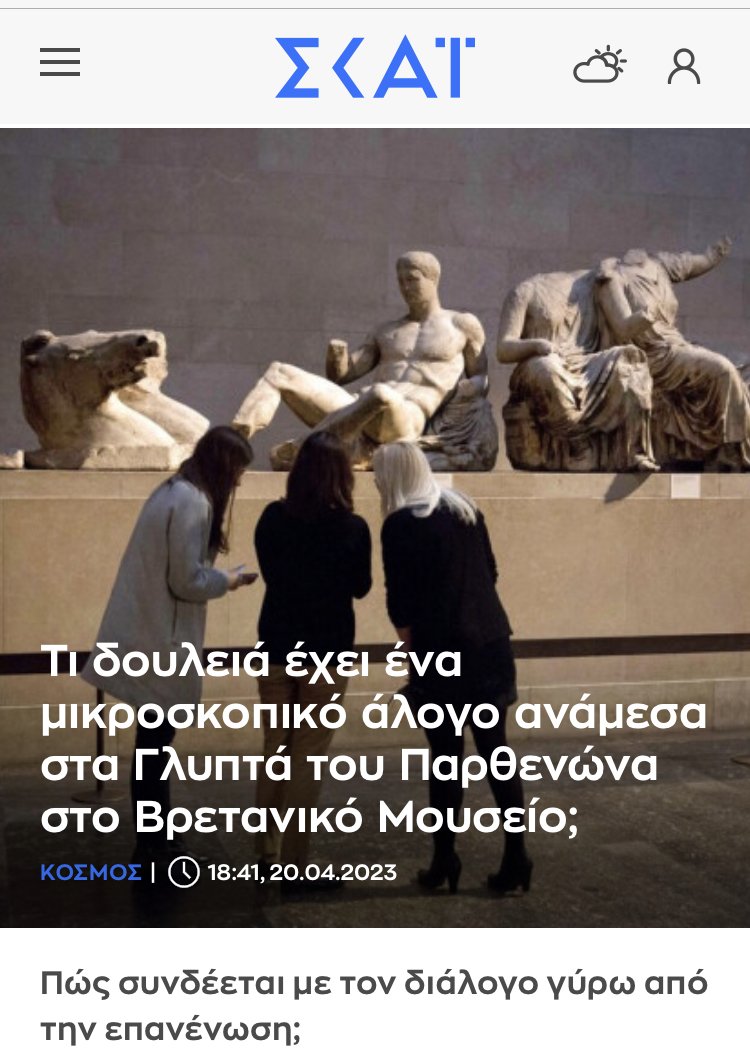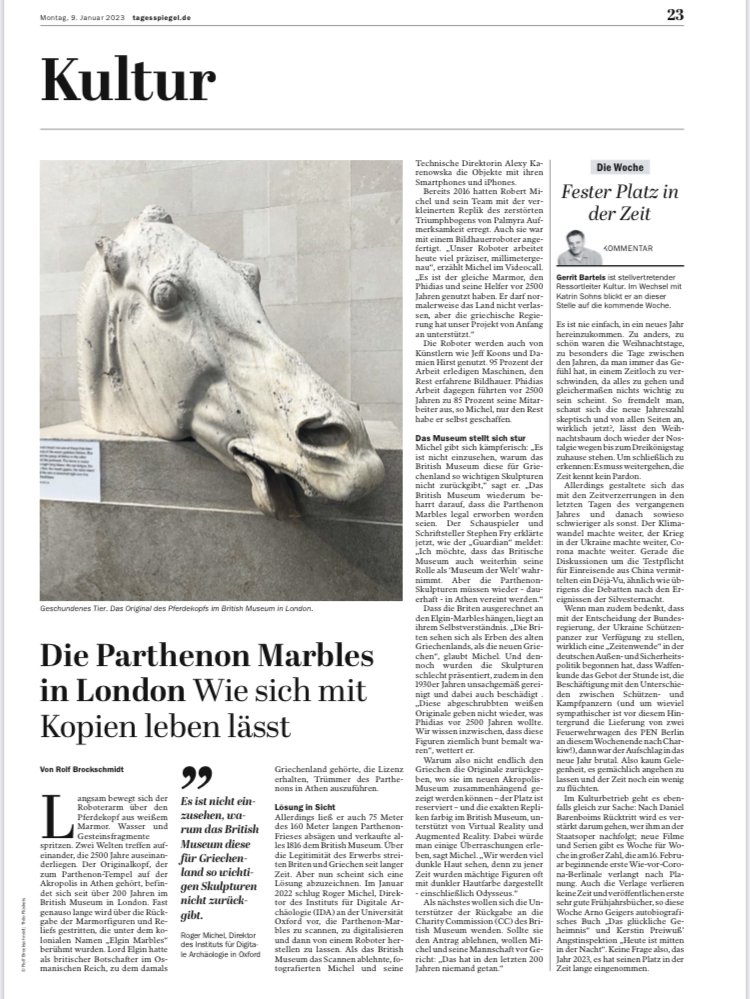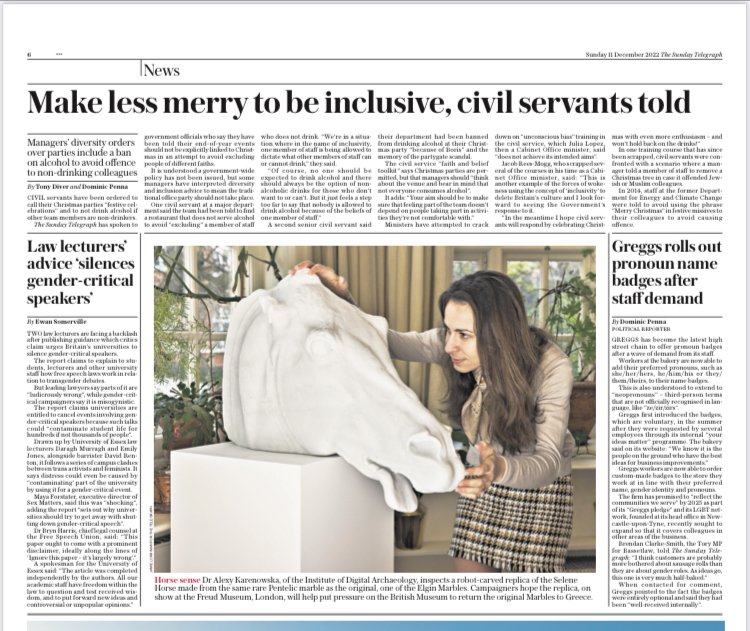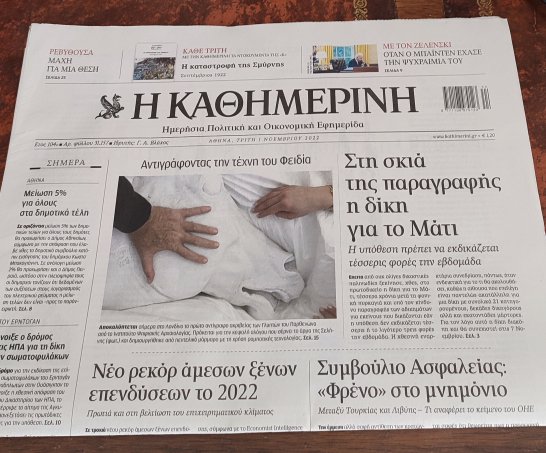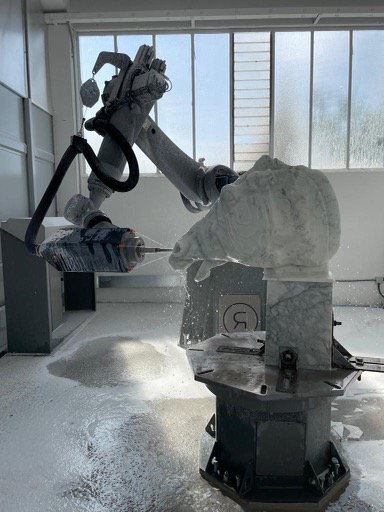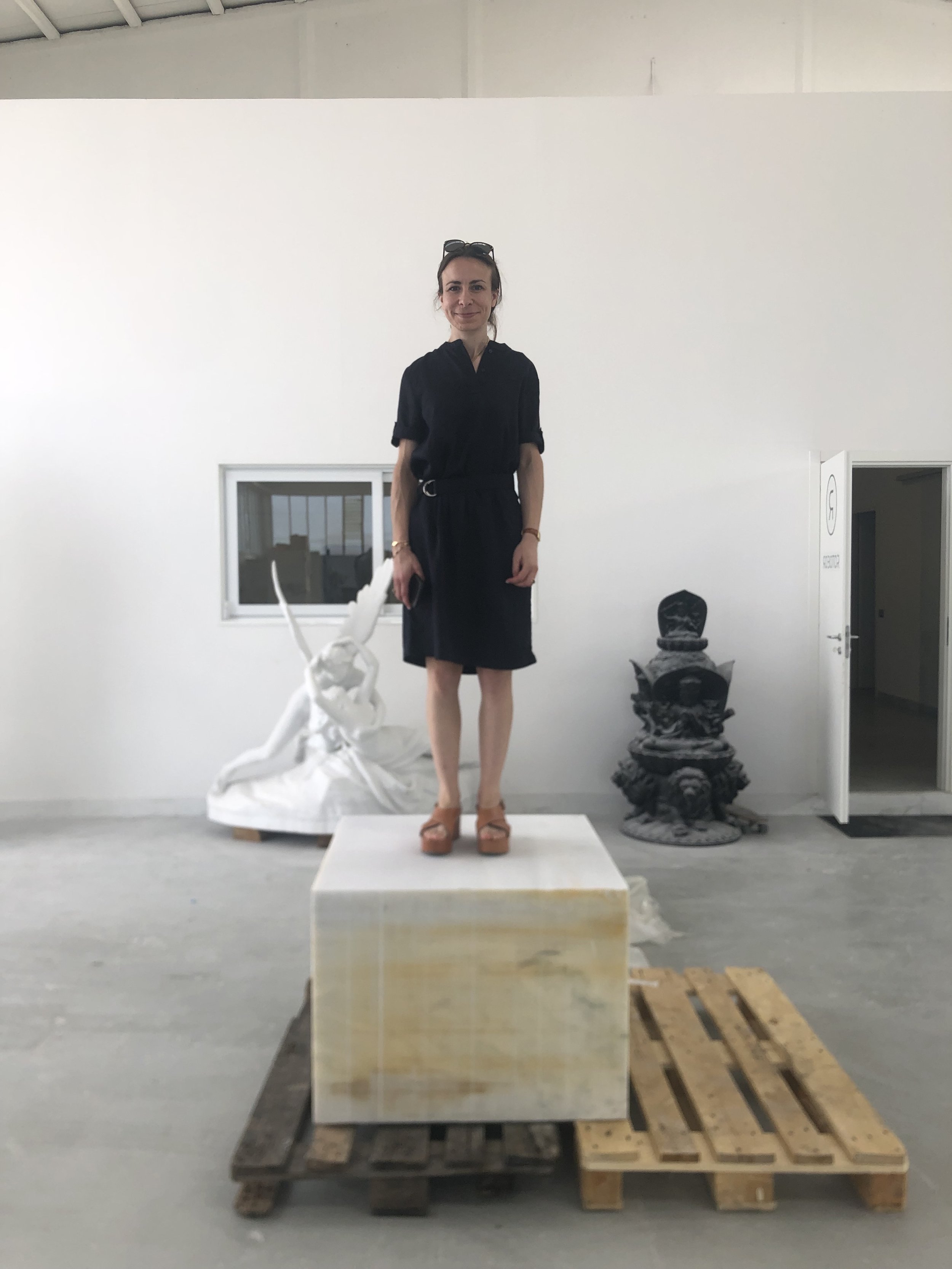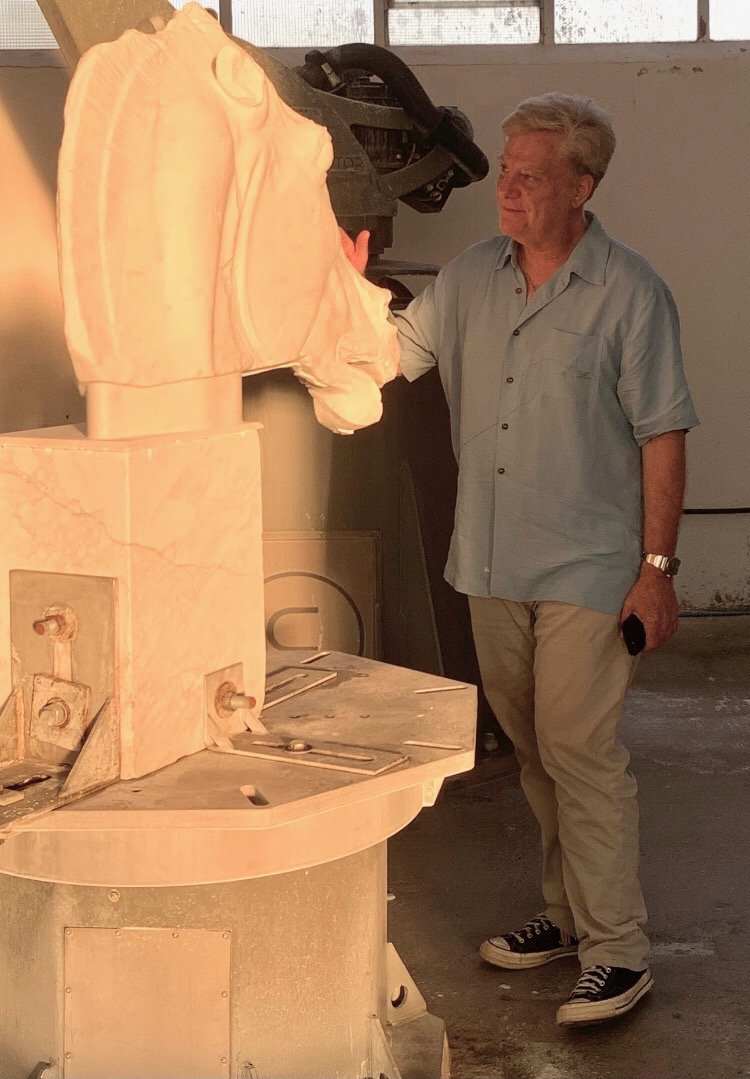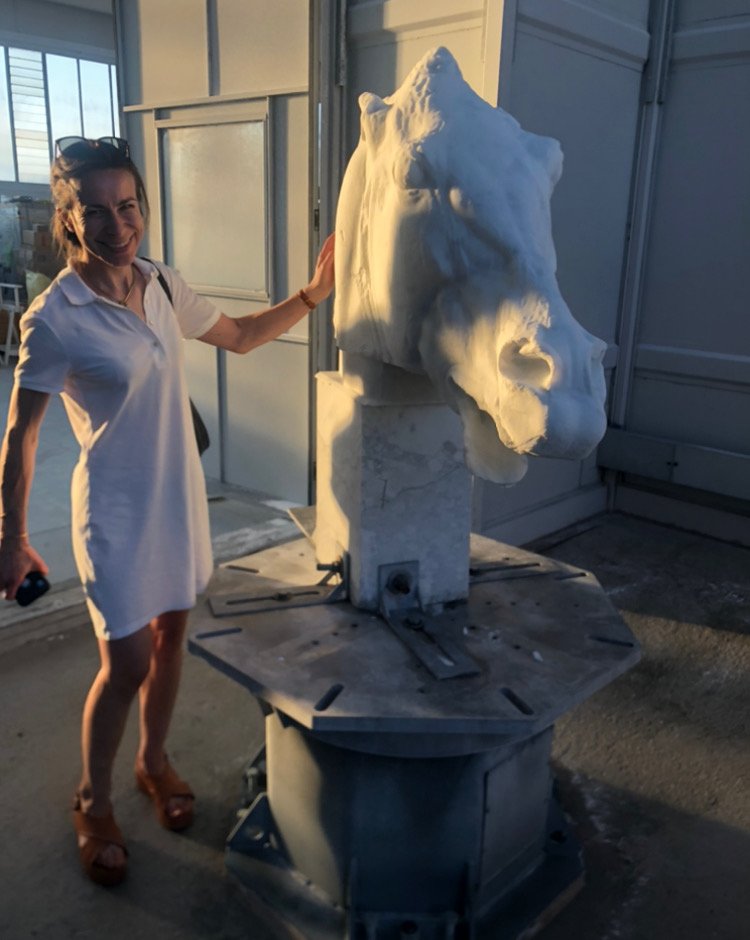The Elgin Marbles
As the Telegraph first reported, on April 14th, 2023, the IDA installed a sub-microscopic copy of the Selene Horse in the British Museum's Duveen gallery—only steps away from the original version of Phidias' famous masterpieceAccording to ArtNet news:
A tiny horse is hiding somewhere in the British Museum’s Duveen Gallery. How tiny? Smaller than the smallest visible wavelength of light—so tiny it’s extremely unlikely the museum will find ever it. And that’s exactly the way Oxford’s Institute of Digital Archaeology (IDA) wants it.
The 19-micron steed is a perfect replica of the Selene Horse, one of the hotly contested Parthenon sculptures, and the IDA sees it as a perfect fusion of ancient Greek craftsmanship and modern engineering. It’s quite possibly the smallest 3D copy of anything.
To create this tiniest of sculptures, the IDA used a technique called two-photon lithography (TPL). Effectively the nano-engineering version of 3D printing, it uses a laser to carve the sculpture in a tiny block of clear resin material known as a photoresist. It is then exposed to a developing agent, after which the excess material can be rinsed away leaving the finished sculpture. Our Selene Horse is so small that several hundred would fit into a single grain of rice.
As for the pedagogy underlying their guerrilla installation, the IDA's director, Roger Michel, explained that there were two goals: "In the first instance, we wanted to help people think about where what is truly important of the Selene Horse -- the history and heritage it represents -- resides. Our 20 micron sculpture stands at the boundary between physical existence and non-existence, and yet it arguably has the same power to recall the mythology of the moon goddess as it's much larger Pentelic marble cousin.
"Second, We wanted to explore ideas of control in relation to historic objects. The British Museum has sculptures it took from someone else and won’t give back. Now, thanks to us, it has a sculpture that was forced onto it, and is powerless to remove.”
More miniature creations are already in the pipeline! The event was widely covered in both the UK and Greek press: MSN, Cyprus Times, Kathimerini, Skai, PARAPOLITIKA, LiFO
Scanning electron microscope image of the horse
The tiny horse is at the tip of the spatula
Williams College
Phi Beta Kappa Lecture
March 15, 2023
Roger Michel and Alexy Karenowska speak at Williams College on international aid and cultural heritage research. A superb conversation about the Elgin marbles, in the midst of a New England Blizzard!
A Pentelic Marble Copy of the Selene Horse
November 1, 2022
Join the IDA and partners at the Freud Museum on Tuesday, November 1st for an unveiling event. Drinks and canapés from 5PM. All are welcome!
REGISTER HERE
The unveiling of our first Pentelic recreations of the Parthenon sculptures at London's Freud Museum on November 1, 2022 was a massive success! The IDA's Roger Michel and Sir Simon Jenkins revealed the robot- carved and hand-finished marble reconstruction -- accurate to within a fraction of a mm -- to an enthusiastic crowd of journalists, artists, academics, diplomats and activists. The precision of the copy of this iconic sculpture was immediately apparent.
The national and international news coverage was massive and immediate, with the story of the unveiling covered by the BBC, ITV, Sky, ABC Cultura, Reuters, AP, The Times, Times Radio, Radio 4, and many other news outlets around the world.
It was especially gratifying to see the universally favorable reaction to our reconstruction in the Greek press, with all of the Greek national dailies carrying the story on their front pages: Ta Nea, Kathimerini, Greek City Times, Europost, Neakriti. While we always endeavor to operate on behalf of local stakeholders, it is nonetheless encouraging to see such strong evidence of local support.
However, most encouraging of all was the immediate reaction of the British Museum. The day after the unveiling, the BM's chairman, George Osborne, provided his most emphatic statements to date regarding the BM's willingness to see the Parthenon sculpture return home. Repatriation is now clearly a question only of timing. As The Times reported, Mr Osborne had the following to say at the BM's annual board dinner on November 2, 2022:
See complete story HERE. Many thanks to everyone who worked so tirelessly and unselfishly over the years to reach this exciting moment!
Roger Michel's talk on the history and future of the Elgin dispute at the Getty Museum/UCLA and hosted by the Greek Consulate may be viewed here:
“The Parthenon Marbles, commonly known as the Elgin Marbles, were removed from the ancient Acropolis of Athens in 1801 by Lord Elgin, British ambassador to the Ottoman Empire. Carved by the sculptor Phidias, they were eventually sold to the British government in 1817 and are housed in the British Museum. Public debate about repatriating the marbles is heated and ongoing.
Can the creation of exact copies of the originals resolve the repatriation quandary? Roger Michel, executive director of the Institute of Digital Archaeology, at the University of Oxford, believes the repatriation issue can be resolved with the help of 3-D machining. His research team has developed a robot with the ability to create faithful copies of large historical objects. Michel will explore humanity’s connection to culturally significant objects and the emphasis we place on physical possession. Is possession an inherently colonial concept? Are heritage assets particularly susceptible to being exploited for the purposes of historical revisionism? Under what circumstances can copies provide satisfactory substitutes for original material? These questions will be examined against the backdrop of the IDA’s ongoing Elgin repatriation efforts.
Roger Michel is the founder and Executive Director of the Institute for Digital Archaeology (IDA). The IDA operates globally, undertaking a huge variety of heritage projects, many of which are aimed at advancing social justice goals. Its principal partners are the UN, UNESCO, and local and national governments. Mr. Michel has published and lectured frequently on various heritage conservation topics. He was a member of the faculty at BU Law School for 25 years, is an Honorary Fellow of Trinity College (Oxford), and is co-publisher of Arion Magazine. Mr. Michel is a graduate of Harvard and Oxford Universities.”
Dr Alexy Karenowska puts the IDA's Elgin repatriation project in the context of our broader public engagement agenda in this superb 2023 podcast. Listen here.
The complete reversal in the British Museum's position on the Elgin Marbles since we announced our plans to create exact copies of the Parthenon sculptures on January 28, 2022 has been both miraculous and gratifying. The product of the tireless work of many people over many years, it will be a great day in Greece when the originals go back home where they belong. Many thanks to the global media for thoughtful, in-depth reporting that unquestionably moved the needle of public opinion and made this extraordinary diplomatic breakthrough possible. See here, here, here and here.
In fact, public opinion has shifted decidedly in favor of repatriation—nearly 80% of Britons now support sending the Elgin Marbles back to Greece, up from about 60% as recently as late 2021. See here.
THE TIMES UK, 2022
Without question, the Times very early coverage of the IDA’s plans to offer the British Museum perfect Pentelic marble replicas of the Parthenon sculptures in its collection, together with the paper’s extraordinary editorial support of our efforts, have been significant factors in breaking this 200 year-old logjam.
As the Times stated in its lead editorial on February 14, 2022:
It is one of the longest-running diplomatic disputes between Britain and a close ally. But could cutting-edge science provide the solution? For more than 50 years Greek governments have sought the return of the Elgin Marbles, the sculptures that used to adorn the Parthenon in Athens. The museum, with the backing of successive governments, has refused to return them, saying that they were legitimately purchased.
Yet we report today that the Institute of Digital Archaeology believes it can recreate an exact replica of the Parthenon sculptures with 3D printing technology. Using scans taken by 3D cameras, the institute would be able to make models accurate to within a millimetre. These models could then be used by a giant carving robot at the Carrara quarry in Italy to recreate the sculptures.
The British Museum should embrace this technological opportunity. As The Times argued last month, the marbles should be returned to Greece, where they can be displayed in the magnificent Acropolis Museum in Athens. The British Museum should agree to display a 3D replica. In return Greece could commit to allow no further copies to be made. That way, Greeks can regain their cultural heritage, and the British Museum can retain its status as the world’s greatest historical collection.
Within days of the Times’ editorial, the IDA’s project was debated in the House of Lords, with many peers advancing the same views as London’s newspaper of record. See here.
The IDA’s reconstruction of the Elgin Marbles was carried out in close consultation with the Greek government, its allies, and supporters. Like all IDA heritage reconstruction projects, the Elgin recreations are stakeholder-driven.
Roger Michel and Ambassador raptakis. the elgin marbles project was announced with Ambassador Raptakis present in London of January 28, 2022.
Carving of the IDA’s reconstructions of the Parthenon sculptures began in June, 2022 at the Carrara workshop of our longtime partner, Robotor/Torart. The copies have exceeded all expectations. Carved from the same stone as the originals, the reconstructions are visually indistinguishable from the originals.
When asked in July, 2022 about the role that the IDA's replicas might play in resolving the Elgin marbles dispute, the BM’s Deputy Director, Jonathan Williams, quipped: “People come to the British Museum to see the real thing, don’t they?” The museum's curators apparently think not. The two galleries adjoining the Elgin gallery both contain replicas of Parthenon sculptures still residing in Greece. Nearby are plaster casts of the palaces of Xerxes and Darius and the tombs of Sety and Merenptah. In fact, just like at peer museums around the world, copies are currently used throughout the BM.
Apart from suggesting that Mr. Williams is less familiar with the BM's collection than he should be, his comment also provides some insight into why this dispute is still ongoing after 200+ years. Mr Williams, like his predecessors, seems to see the BM more as a trophy case than a classroom. While the Elgin marbles are unique repositories of national pride for the Greeks, they are poor representatives of the art of 5th century BC Greece. Denuded of color and surface texture, missing heads, arms, feet and fingers, the Parthenon sculptures are a far cry from the “real thing," at least if the real thing is defined as something that approximates the actual appearance of the work-product of Phidias & Co. Unfortunately, for the BM, it sometimes seems more about plunder than pedagogy.
While there is certainly something to be said for originality—and there is no question about the BM retaining hundreds of thousands of objects from antiquity, including fragments of the Parthenon—in the particular case of the Elgin marbles, badly damaged as they are, high quality reconstructions, accurate to the millimeter and carved from the same rare Athenian stone as the originals, would get visitors a lot closer to the “real thing." As the BM notes on its own website: where "sculptures are damaged and weathered," copies can "provide an accurate record of their earlier appearance." Indeed, they can—and the IDA’s reconstructions offer precisely this opportunity.
Hear the IDA’s Roger Michel discuss the philosophy underlying the creation of the Parthenon reconstructions on the August 6, 2022 broadcast of DAY 6, Canadian Public Radio’s premier news magazine. Listen here.
The final barrier to a repatriation agreement appears to be Greece's very reasonable unwillingness to endorse a solution premised on the idea that the purported Ottoman transfer of the Marbles to Elgin amounted to a legally enforceable sale. For this reason, a loan of any kind is unacceptable to the Hellenic Republic since a loan would necessarily presuppose British ownership of the sculptures. However, the BM has stated that the trustees are only empowered to make loans, not outright gifts, of the objects in their custody. That has appeared to produce a stalemate (see here). However, as the IDA explained in the following letter published in the September 8, 2022 edition of the Times, the British Museum Act of 1963, which defines the trustees' powers, provides otherwise. The trustees are free to return the marbles to Greece as an outright gift at any time:
